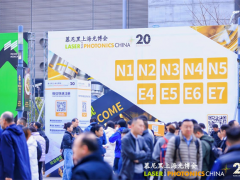据能源之声2月24日报道,2021年,亚洲可再生能源资产的交易额增长了两倍多,达到136亿美元,交易数量同比增长53%,达到75笔。据研究公司Enerdatics报告称,值得注意的是,太阳能行业的大型企业合并推动了价值的大幅增长。
该地区最大的一笔交易是阿达尼绿色能源公司以35亿美元收购印度SB能源控股公司。该交易涉及1.4吉瓦的运营太阳能产能和2.7吉瓦的正在开发产能。 另一项重大收购是 EDP Renewables 以 8.8 亿美元收购新加坡太阳能开发商 Sunseap,该公司为屋顶、地面安装的公用事业规模和浮动太阳能光伏项目提供建造、拥有和运营战略。 该公司拥有4.8吉瓦的太阳能开发管道。
Enerdatics表示,太阳能行业在亚洲可再生能源并购领域占据主导地位,2021年占该地区总交易量的66%,总交易额的78%。
根据Enerdatics的数据显示,2021年,50兆瓦以下资产组合的交易量同比增长了约50%。Enerdatics创始人Mohit Kaul表示,这是由对可再生能源的需求驱动的,以满足居民用电需求。此外,安装成本的下降和土地可用性的限制也刺激了小型社区太阳能和屋顶光伏项目的增长。
Kaul补充道,印度和越南等东南亚国家的有利立法举措也在推动亚洲太阳能业务的扩建。印度政府制定了一个雄心勃勃的目标,即到2030年实现280吉瓦的太阳能装机发电量。为了实现这一目标,该国已经实施了6亿美元的激励方案,以鼓励太阳能设备的制造,以及资本补贴、税收减免和对小型太阳能装置的PPA担保。与此同时,由于对发电资产的资本所有权比例缺乏限制,越南可再生能源行业近年来已成为一个对国际投资者有吸引力的市场。此外,强劲的经济扩张预计将导致该国能源需求大幅增加。该国在2021批准了新的太阳能奖励措施,包括提高原料(关税)和屋顶太阳能供应商直接向商业消费者出售电力的能力。
Enerdatics指出,另一个重大发展是与日本和韩国等东南亚国家形成战略关系,目标是发展大型海上风电项目。Equinor和TotalEnergies道达尔等石油巨头、贝莱德(BlackRock)、哥本哈根基础设施合作伙伴(Copenhagen Infrastructure Partners)和麦格理(Macquarie)等私募股权公司,以及SSE、Iberdrola和JERA等经验丰富的电力公司,都组建了合资企业,以在该地区建立立足点。
政府的雄心正在推动这些国家海上风电项目的开发,比如日本到2030年部署10吉瓦的海上风电装机发电量,到2040年部署30-45吉瓦的海上风电装机发电量,其中包括浮动风。
Enerdatics称,浮动太阳能是另一种正在探索的海上部署技术,在印度、新加坡和印度尼西亚等国越来越受欢迎。2021年7月,可再生能源公司Sunseap与印尼项目开发商BP Batam合作,在巴淡岛海岸外创建了一个2.2吉瓦的浮动太阳能项目,使其成为该地区正在开发的最大的浮动太阳能项目。在土地资源有限的地区,鼓励开发优惠的清洁能源,是推动亚洲浮动太阳能装置兴起的因素之一。
郝芬 译自 能源之声
原文如下:
Asian renewable energy deals triple to $13.6bn in 2021
The deal volume for renewable energy assets in Asia more than tripled to $13.6 billion in 2021, as the number of transactions surged by 53% year-on-year to 75. Significantly, large corporate mergers in the solar energy sector fuelled the considerable increase in value, reported Enerdatics, a research company.
The largest deal in the region was Adani Green Energy’s $3.5 billion purchase of India’s SB Energy Holdings. The deal involved 1.4GW of operational solar capacity and 2.7GW of capacity under development. Another significant acquisition was EDP Renewables’ $880 million purchase of Singapore-based solar developer Sunseap, which offers a build, own, and operate strategy for rooftop, ground-mounted utility-scale, and floating solar PV projects. The company has a solar development pipeline of 4.8 GW.
The solar sector dominates the renewables mergers and acquisitions (M&A) landscape in Asia, occupying a 66% share of the total deal volume and a 78% share of the aggregate deal value in the region, in 2021, said Enerdatics.
Transactions for sub-50MW portfolios of assets surged by about 50% year-on-year in 2021, according to Enerdatics data. “This was driven by the need for renewable energy sources to satisfy residential electricity demand. Further, declining installation costs and land availability constraints are also stimulating the growth of small-scale community solar and rooftop PV projects,” said Mohit Kaul, founder, Enerdatics.
“Favorable legislative moves by nations in Southeast Asia, such as India and Vietnam, are also driving expansion in the solar business in Asia. The Indian government has set an ambitious goal of 280 GW of solar installations by 2030. To meet this goal, the country has put in place $600 million in incentive programmes to encourage the manufacture of solar energy equipment, as well as capital subsidies, tax breaks, and PPA guarantees for small-scale solar installations,” added Kaul.
“Meanwhile, due to the lack of constraints on the capital ownership percentages of power generating assets, the Vietnamese renewable energy sector has become an attractive market for international investors in recent years. Furthermore, strong economic expansion is expected to result in a large increase in the country’s energy demand. The country authorised new solar energy incentives in 2021, including improved feed-in-tariffs (FiTs) and the ability for rooftop solar providers to sell power directly to commercial consumers,” said Kaul.
“Another significant development is the formation of strategic relationships in Southeast Asian countries such asJapan, and South Korea, with the goal of developing large-scale offshore wind projects. Oil majors like Equinor and TotalEnergies, private equity firms like BlackRock, Copenhagen Infrastructure Partners, and Macquarie, as well as experienced power utilities like SSE, Iberdrola, and JERA, have formed JVs to establish a foothold in the region,” noted Enerdatics.
Government ambitions, such as Japan’s goal of deploying 10 GW of offshore wind capacity by 2030 and 30-45 GW by 2040, including floating wind, are driving the development of offshore wind projects in these countries.
“Floating solar is another technology being explored for offshore deployment, and it is gaining popularity in nations such as India, Singapore, and Indonesia. Renewables company Sunseap teamed up with BP Batam, an Indonesian project developer, to create a 2.2 GW floating solar project off the coast of Batam Island in July 2021, making it the region’s largest floating solar project under development. Incentivising the development of affordable clean energy in areas with limited access to land resources is one of the factors contributing to the rise of floating solar installations in Asia,” said Enerdatics.
免责声明:本网转载自其它媒体的文章及图片,目的在于弘扬石化精神,传递更多石化信息,宣传国家石化产业政策,展示国家石化产业形象,参与国际石化产业舆论竞争,提高国际石化产业话语权,并不代表本网赞同其观点和对其真实性负责,在此我们谨向原作者和原媒体致以崇高敬意。如果您认为本站文章及图片侵犯了您的版权,请与我们联系,我们将第一时间删除。







